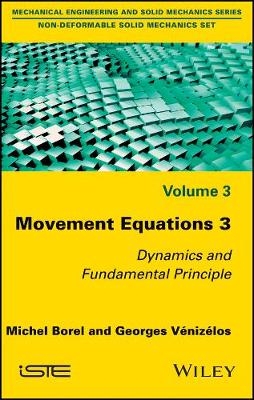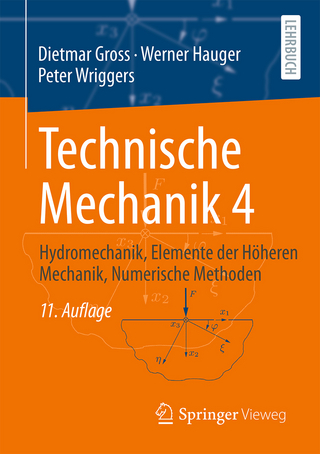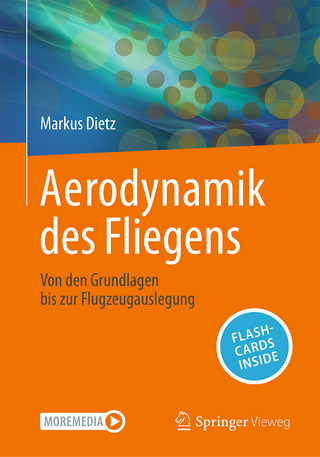
Movement Equations 3
ISTE Ltd and John Wiley & Sons Inc (Verlag)
978-1-78630-034-8 (ISBN)
In order to achieve this, it is treated first of all in the context of solids in their environment, as a prerequisite for the formulation of the fundamental principle. Then, in addition to its use in some exercises, the approach is illustrated by three particular cases.
The first is an example where it is developed end-to-end and addresses the two approaches that lead to the equations of motion. The two other examples deal with two classical but important subjects, the movement of the Earth according to the hypotheses that can be stated about it, and Foucault’s pendulum.
Michel Borel, Consultant. Georges Vénizélos, Conservatoire National des Arts et Métiers, France.
Introduction ix
Table of Notations xiii
Chapter 1 Fundamental Principle of Dynamics 1
1.1 The fundamental principle of dynamics and its scalar consequences 1
1.1.1 Fundamental principle of dynamics 1
1.1.2 Choosing a frame 2
1.1.3 Preferred time scale 5
1.2 Secondary principles 7
1.2.1 First secondary principle of the separation of effects 7
1.2.2 Second secondary principle of effort generators 8
1.2.3 Third secondary principle of effort receivers 8
1.3 Motion of a set (D) in a given frame〈λ〉 9
1.3.1 Presentation of the context 9
1.3.2 Combination of accelerations 10
1.3.3 Coriolis inertial torsor 10
1.3.4 Drive inertial torsor 11
1.3.5 Relation between the dynamic torsors in the two frames 12
1.3.6 Applying the fundamental principle 13
1.4 Motion of a non-deformable solid in a given frame 14
1.4.1 Coriolis inertial torsor 14
1.4.2 Drive inertial torsor 16
Chapter 2 Solid in Space Efforts and Links: Power 19
2.1 Degrees of freedom of a solid 19
2.2 Free solid 20
2.2.1 Velocity distributing torsor 20
2.2.2 Kinetic torsor 21
2.2.3 Dynamic torsor 21
2.2.4 Kinetic energy 22
2.2.5 Applying the fundamental principle of dynamics 22
2.3 Linked solids and links 23
2.3.1 Links 23
2.3.2 Configurable links 24
2.3.3 Linked solids 25
2.4 Virtual power developed on a material set (D) 28
2.5 Power of the efforts exerted on a solid 30
2.5.1 Definition 30
2.5.2 Discrete force field 30
2.5.3 Non-deformable mechanical set 31
2.5.4 Continuous mechanical set 31
2.6 Properties of power 32
2.6.1 Powers developed in two distinct frames 32
2.6.2 Case of a system of forces equivalent to zero acting on a solid 32
2.6.3 Case of a system of forces equivalent to zero acting on a deformable mechanical set 33
2.6.4 Partial powers 34
Chapter 3 Scalar Consequences and Movement Equations 35
3.1 Establishment principle of the movement equations 35
3.1.1 Vector projection 36
3.1.2 Torsor products 37
3.1.3 Choice of representative scalar consequences 38
3.2 Movement equations of a solid 39
3.2.1 Scalar consequences via vector projection 39
3.2.2 Scalar consequences of the analytic mechanics of motion 57
3.2.3 Linear independence of torsors 58
3.2.4 Exercise 3 – Scalar consequences using analytical mechanics 60
3.3 Movement equations of the free solid 72
3.4 Movement equations of the linked solid with configurable links 75
3.4.1 Velocity distributing torsor and partial distributing torsors 75
3.4.2 Case of configurable links independent of time 76
3.4.3 Case of configurable links dependent on time 77
3.4.4 Perfect configurable links 78
3.5 Energetic expression of the equations of analytical mechanics 78
3.5.1 Case of configurable links explicitly independent of time 78
3.5.2 Case of configurable links explicitly dependent on time 79
3.6 Summary example 81
3.6.1 Locating the solid 81
3.6.2 Links 83
3.6.3 Solid kinematics 83
3.6.4 Kinetics of the solid 85
Chapter 4 Particular Applications 97
4.1 Simulation of the motion of Earth 97
4.1.1 Application of the fundamental principle 97
4.1.2 Theorem of dynamic moment at G 99
4.1.3 Theorem of dynamic resultant 108
4.2 Foucault’s pendulum 114
4.2.1 Observation of the phenomenon 114
4.2.2 Analyzing the phenomenon 116
Chapter 5 Methodological Formulary 127
5.1 Reference outline on the motion of a solid 127
5.1.1 Representation of a frame 127
5.1.2 Reference frame 129
5.1.3 Situation of the solid 130
5.1.4 Notion of basis in a frame 133
5.2 Kinematics of the solid 133
5.2.1 Kinematics of a material point M 134
5.2.2 Kinematics of non-deformable solids 139
5.3 Principle of motion with fixed plane 142
5.3.1 Kinematics of a solid 142
5.3.2 Fixed and mobile centroids in a motion with fixed plane 143
5.4 Combination of motions 145
5.4.1 Combination of velocities 145
5.4.2 Combination of accelerations 147
5.5 Kinetics of non-deformable solids 148
5.5.1 Center of measure 148
5.5.2 Linear momentum and kinetic torsor 149
5.5.3 Dynamic torsor 153
5.5.4 Kinetic energy 155
Bibliography 161
Index 163
| Erscheinungsdatum | 20.10.2017 |
|---|---|
| Verlagsort | London |
| Sprache | englisch |
| Maße | 165 x 229 mm |
| Gewicht | 431 g |
| Themenwelt | Naturwissenschaften ► Physik / Astronomie ► Mechanik |
| Technik ► Maschinenbau | |
| ISBN-10 | 1-78630-034-6 / 1786300346 |
| ISBN-13 | 978-1-78630-034-8 / 9781786300348 |
| Zustand | Neuware |
| Informationen gemäß Produktsicherheitsverordnung (GPSR) | |
| Haben Sie eine Frage zum Produkt? |
aus dem Bereich


